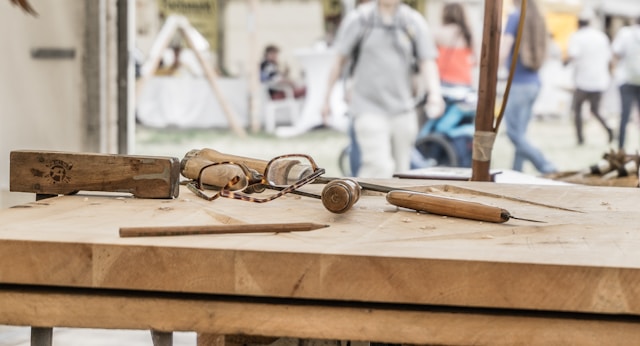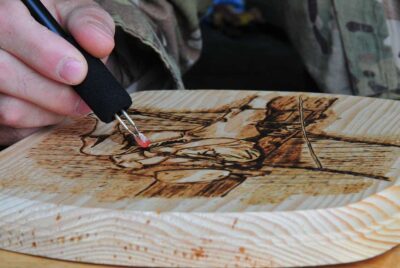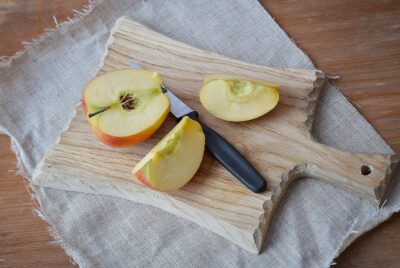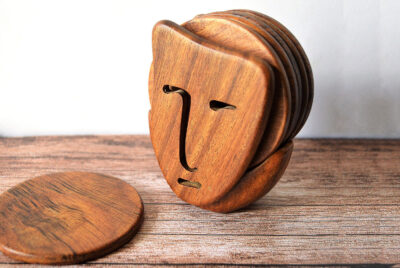Essential Features to Look for in the Perfect Woodworking Bench
If you’re a woodworking enthusiast like me, you know that a great woodworking bench is more than just a flat surface to work on—it’s the backbone of every project. Whether you’re crafting intricate joinery or assembling a rustic table, the right bench can make all the difference. Let’s dive into the must-have features that’ll take your woodworking game to the next level.
Why Choosing the Right Woodworking Bench Matters
A woodworking bench isn’t just furniture—it’s your trusty partner in crime. The right bench provides stability, comfort, and efficiency, saving you time and frustration. Plus, it ensures your tools and materials stay organized and within reach, so you can focus on creating, not searching for that rogue chisel. Whether you’re a seasoned woodworker or just starting out, investing in the right bench is a game-changer. Need some inspiration? Check out this guide on woodworking benches for ideas!
Sturdiness: The Foundation of a Great Bench
Materials That Ensure Stability
Imagine working on a project, and your bench starts wobbling—talk about a buzzkill! The materials of your bench play a huge role in its sturdiness. Hardwood, like maple or oak, is a solid choice for the frame because it resists warping and can handle heavy-duty work. A sturdy base ensures that your bench will stand the test of time, no matter how ambitious your woodworking projects get.
The Importance of a Non-Wobbling Frame
A wobbly bench is the enemy of precision. Look for a bench with a thick, stable base. A frame with mortise-and-tenon joinery adds a level of durability that screws just can’t match. Stability is key when planing or chiseling, so don’t skimp on this feature. If you’re not sure which frame type to go for, this resource has some great insights!
The Right Size: How Dimensions Impact Your Work
Ideal Length for Versatile Projects
The length of your bench depends on your workspace and the projects you tackle. A 6-8 foot bench is a sweet spot for most woodworkers—long enough for big projects but not so massive that it overtakes your shop. If you work on smaller projects, you might prefer a more compact bench to maximize space efficiency.
Finding the Perfect Height for Your Comfort
Bench height can make or break your workflow. Too low, and you’ll be hunched over like a troll; too high, and you’ll lose leverage. Aim for a height where your hands rest comfortably at your sides when touching the top surface. Some benches offer adjustable heights, which can be a great feature if you work on a variety of projects.
Work Surface: Durability and Functionality
Why Hardwood Tops Are the Gold Standard
When it comes to the work surface, durability is king. A hardwood top, like beech or maple, can take a beating without showing wear. Plus, it’s less likely to dent or warp compared to softer woods. The right surface will ensure your bench stays in prime condition for years.
Surface Finish: Smooth or Textured?
A smooth surface is great for precision work, while a slightly textured finish helps keep materials in place. You can always sand it down or refinish it to suit your needs. The choice between the two depends on your personal preference and the type of projects you typically work on.
Built-In Storage: Keeping Your Tools Handy
Drawers vs. Shelves: Which One Works Better?
Built-in storage is a lifesaver. Drawers are great for smaller tools, while shelves offer space for larger equipment. I personally love a combo of both—it’s like having the best of both worlds! Keeping your workspace organized makes your projects more enjoyable and efficient.
Pegboards and Holders for Tools
Pegboards and tool holders are a game-changer for any woodworking bench! With everything neatly organized and within arm’s reach, you’ll spend less time searching for that elusive wrench and more time creating. Simply hang your tools on the pegboard or tuck them into handy holders to keep your workspace tidy and efficient. It’s a smart, simple solution to keep your tools right where you need them, making every project just a little bit easier and more fun!
Vises and Clamping Options
Choosing the Right Type of Vise for Your Needs
A good vise is like a reliable friend—always there to lend a hand! Whether you go for a front vise, end vise, or leg vise, the key is choosing one that suits your projects. A sturdy metal vise with smooth action ensures a firm grip without damaging your work. If you often handle large pieces, a twin-screw vise might be your best bet. Pick wisely, and your woodworking bench will be even more versatile!
Placement and Ease of Use
Where you position your vise on your woodworking bench can make a world of difference! Most right-handers prefer a front-left corner mount for easy access, while lefties might flip that setup. The key is keeping it within arm’s reach without interfering with your workflow. A securely mounted vise with smooth operation means less frustration and more precision. Find the perfect spot, and your bench will feel like an extension of your own hands!
Portability: When You Need to Move Your Bench
Caster Wheels for Easy Movement
Ever wished your woodworking bench could glide across your workshop like a dream? Adding caster wheels is the answer! They make rearranging your space effortless—perfect for small shops or shared work areas. Just make sure they have locking mechanisms, so your bench stays put when it’s time to chisel and saw. No more heavy lifting or awkward shuffling—just roll, lock, and get to work with ease. Your back will thank you!
Foldable Options for Compact Spaces
Short on space but big on woodworking dreams? A foldable woodworking bench might be your perfect match! These clever designs offer a sturdy workspace when you need it and tuck away neatly when you don’t. Whether you’re working in a tiny garage or a cozy apartment, a foldable bench gives you flexibility without sacrificing function. Just unfold, create something amazing, and stash it away—because great woodworking shouldn’t require a giant workshop!
Customization Options for Specific Projects
Adding Dog Holes and Tracks
Dog holes and tracks might sound like something your pet would love, but they’re actually game-changers for your woodworking bench! These little additions let you secure materials with bench dogs and clamps, keeping everything steady while you work your magic. No more slipping boards or wobbly cuts—just smooth, controlled craftsmanship. Plus, you can customize their placement to fit your projects. A few well-placed holes, and suddenly, your bench is more versatile than ever!
Modular Add-Ons for Unique Needs
Your woodworking bench should work as hard as you do, and modular add-ons make that possible! Need a router table, sanding station, or extra storage? Simply add what suits your projects best. The beauty of modularity is flexibility—you can swap, remove, or rearrange attachments as your skills evolve. Think of it like customizing your ultimate woodworking sidekick. With the right add-ons, your bench transforms into a powerhouse tailored just for you!
Price vs. Quality: Finding the Balance
Investing in Long-Term Durability
A woodworking bench isn’t just a purchase—it’s a lifelong workshop companion! Investing in a sturdy, well-built bench means fewer repairs, better stability, and years of reliable use. Hardwoods like maple or beech stand the test of time, and quality craftsmanship ensures it won’t wobble under pressure. Think of it as an investment in your craft, making every project smoother and more enjoyable. A durable bench today means stress-free woodworking for years to come!
When Budget-Friendly Options Make Sense
Not every woodworking bench needs to break the bank! If you’re just starting out or working with limited space, a budget-friendly bench can be the perfect solution. Many DIY plans use affordable materials like plywood and 2x4s, offering sturdy and customizable options. Plus, you can always upgrade later as your skills grow. A solid, cost-effective bench still gets the job done—because at the end of the day, it’s all about making sawdust and building something great!
Safety Features to Keep in Mind
Rounded Edges and Anti-Slip Feet
When it comes to a woodworking bench, the little details make all the difference. Rounded edges not only add a soft, finished touch to your workspace but also ensure no sharp corners to bump into. Paired with anti-slip feet, your bench stays firmly in place, giving you stability and peace of mind as you work. These thoughtful features combine safety and style, making your woodworking projects that much more enjoyable!
Stability Features for Heavy Projects
When tackling heavy projects, stability is key! A woodworking bench with reinforced legs, sturdy supports, and a solid base ensures your work doesn’t wobble or shift, even when you’re handling hefty materials. These stability features give you the confidence to go big with your projects, knowing your bench can handle the load. Whether you’re building furniture or crafting something ambitious, your bench will stand firm, keeping everything secure and steady for those challenging tasks!
The Importance of Maintenance
How to Keep Your Bench in Top Shape
Keeping your woodworking bench in top shape is simple and rewarding! Regularly wipe down the surface to remove dust and debris, and give it a light sanding now and then to maintain smoothness. Tighten any loose bolts or screws to keep everything secure, and don’t forget to check those anti-slip feet to ensure they’re in good condition. With just a little care, your bench will stay as sturdy and reliable as the day you got it!
Regular Checks for Loose Screws and Parts
Regularly checking for loose screws and parts is like giving your woodworking bench a quick tune-up! A few minutes spent tightening bolts and checking joints can make a world of difference in keeping your workspace steady and secure. It’s a simple habit that prevents wobbles and ensures your bench is always ready for action. Plus, it’s a great way to show some love to your trusty tool, ensuring it’s always in top form for your next project!
Conclusion
A woodworking bench isn’t just a piece of furniture—it’s your creative HQ. By focusing on features like sturdiness, size, and customization, you can find (or build) the perfect bench that’ll serve you for years to come. Remember, a well-chosen bench isn’t an expense; it’s an investment in your craft.
FAQs
- What is the best wood for a woodworking bench?
Hardwoods like maple, beech, or oak are ideal due to their durability and resistance to wear. - How high should my woodworking bench be?
Most benches are 34-36 inches high, but the ideal height depends on your comfort and the type of work you do. - Can I build a woodworking bench on a budget?
Absolutely! Many DIY plans use affordable materials like plywood and 2x4s for a cost-effective solution. - What’s the purpose of dog holes on a bench?
Dog holes allow you to use bench dogs and clamps to secure materials firmly during work. - How do I keep my woodworking bench from wobbling?
Ensure the frame is sturdy and the legs are even. Adding cross braces or anti-slip feet can improve stability.




